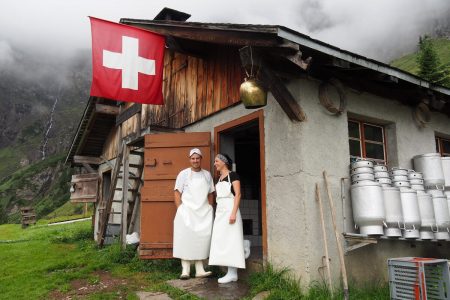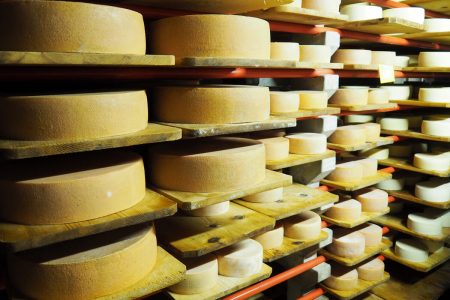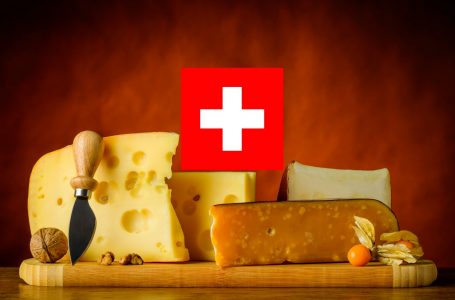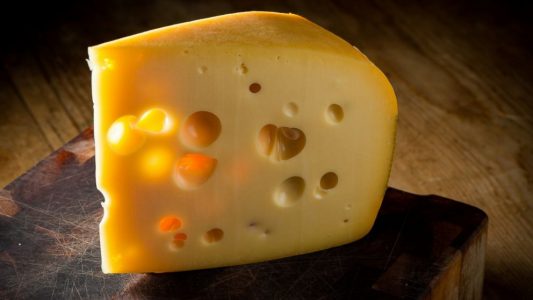Cheese is in the Swiss DNA, making it more than just a Tradition.
There is no doubt the first thought that comes to our mind when we think about Swiss cuisine is cheese and chocolate. Today, we will focus on the salty delicacy which has been present in the country’s menu since the Middle Ages, and like many European countries, Switzerland has always taken its culinary reputation very seriously.

Firstly, let’s have a little history lesson. Cheese in Switzerland in the past century, was held by a heavily government-subsidized organization called the Swiss Cheese Union, which had complete control over the production as well as the export of the delicacy throughout the industrialized 20th century. The organization dictated exactly how, when, and where the product could be created. The three leading sellers in the nation were Gruyère, producing nutty cheeses, Sbrinz- producing parmesan-like cheeses, and Emmentaler- better known as the cheese with the holes.” Such controlled production made the industry very specific, but not for too long. In 1999 the Swiss Cheese Union was guilty of corruption allegations, as there was less control, the Swiss cheese-makers were free to experiment with new techniques and recipes, creating a wider variety.

Dairy farming is obviously central to cheese production and plays a huge role in every step of the cheese-making process. Swiss milk used for making cheese derives from farms with small herds, 10 to 40 cows, and unlike other places, cows are treated according to the ‘Raus-program,’ which means that the animals have to be outside in the summer for 26 days per month and at least 13 days per month in winter. The higher up they are, and the more hilly the location of a farm, the more traditional the grass is.
“It’s truly like tasting cheese making 200 years ago”
Now let’s see Switzerland’s most famous cheeses, try not to get too hungry! One of the most popular Alpine cheeses is Raclette. It is somewhere between semi-soft and semi-firm in texture, developing a pungent exterior. It’s salty, full-flavoured, and it’s got this salami, bacony notes with cream and hazelnut. Nothing better than finishing your skiing day in a restaurant, eating melted Raclette on steamed potatoes.
Another Alpine star is the Challerhocker. A relatively new cheese made by a single producer Walter Rass, who learned from his father, creating this very tasty and unique recipe. Translating to ”sitting in the cellar”, Challerhocker is washed in wine and spices and then aged for a minimum of 10 months, providing a remarkable depth of flavor. Firm yet creamy, it is wonderful melted and is great for an extra exciting grilled cheese or as a way to liven up your fondue.

Etivaz, another mouth-melting Swiss cheese, entirely hand-made in the mountain peaks during the summer, is a must-try. It is a hard cheese made using unpasteurized milk, having a distinctive, tangy, fruity flavor with a slightly nutty note. The cheese is sold in rolls following a natural maturation period of at least 30 months. It is only produced in small quantities from 400 to 430 tons, or 17,000 to 19,000 wheels, during the summer months. The cheese-making happens in a cauldron over an open fire and after it’s smoked with the natural smoke. It’s truly like tasting cheese making 200 years ago.

Now that you are ready to try the best cheeses in the world, let’s finish off with some interesting facts about this delicacy. According to industry figures, in 2016 some 186,756 tons of cheese was eaten in the nation, which is just over 22kg per person. While the Swiss are undoubtedly big cheese fans, they don’t eat as much as some other countries, including Germany, Cyprus, Iceland, Denmark and Finland who all surpass Switzerland for per capita cheese consumption. Unsurprisingly, the French are world cheese-eating champions, munching through 26.8kg per person every year. Believe it or not there are more than 450 varieties of Swiss cheese, and nearly half of the milk produced in Switzerland is turned into cheese, around a third of it being exported. Emmentaler is the most exported Swiss cheese, with Le Gruyère a close second.
“Cheese is in the Swiss blood. In 2016 some 186,756 tons of cheese was eaten in the nation, which is just over 22kg per person”
Cheese is very close to the heart of Swiss people and closer to its tradition of being produced in villages. Each wheel of Swiss cheese is made in small village diaries, by hand using the recipes passed through generations. Cheese is in the Swiss blood, and now it’s on you to try one of the world’s most popular snacks.
By Mina Vučić